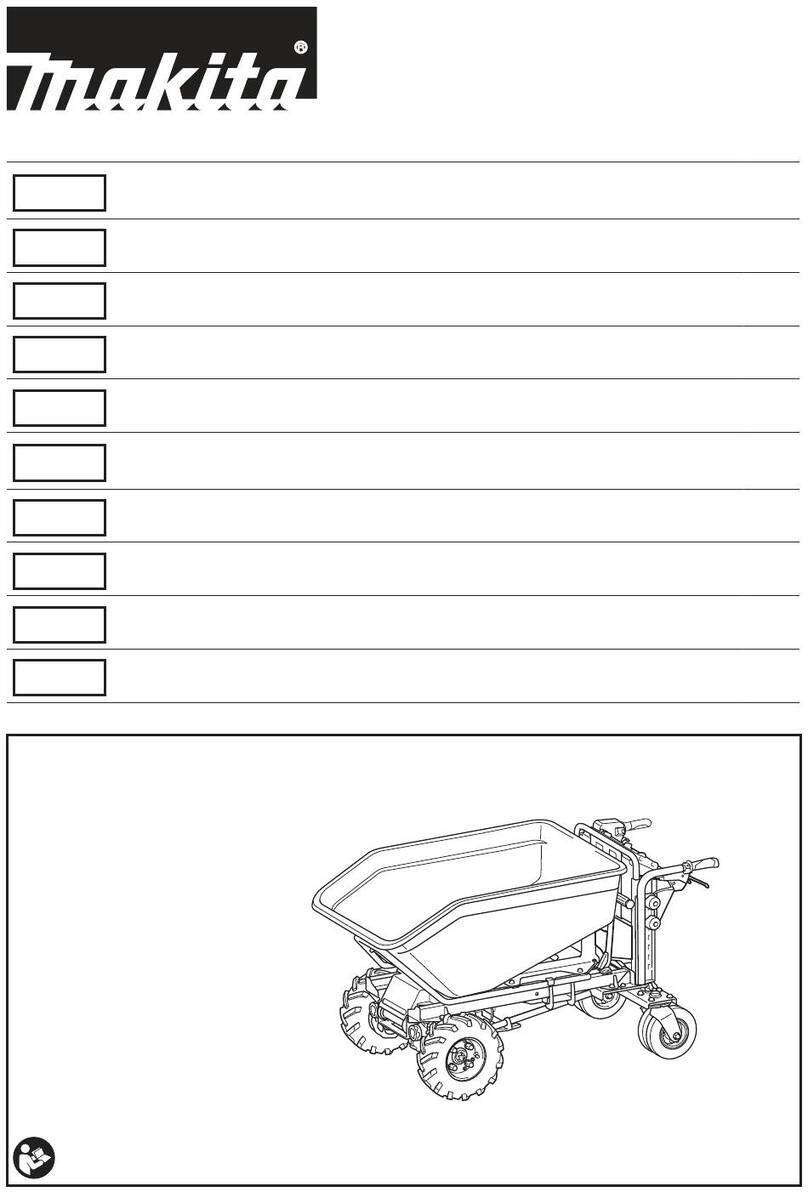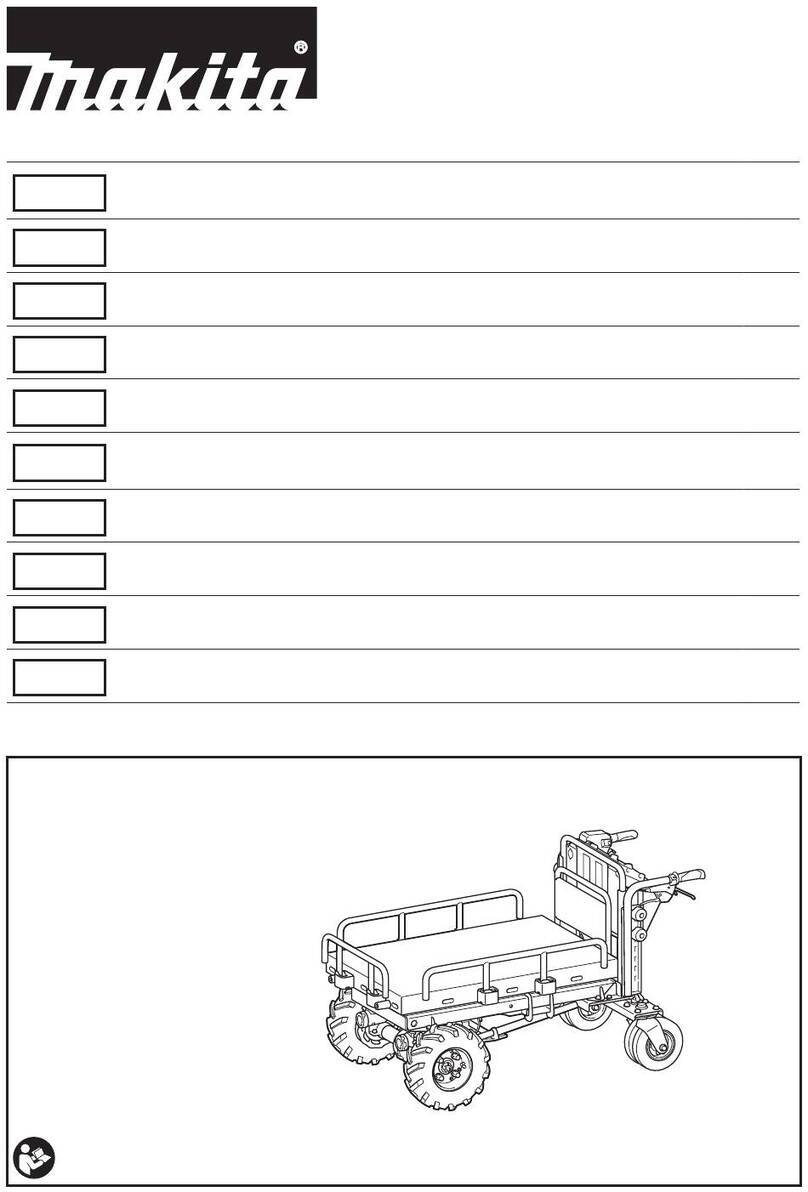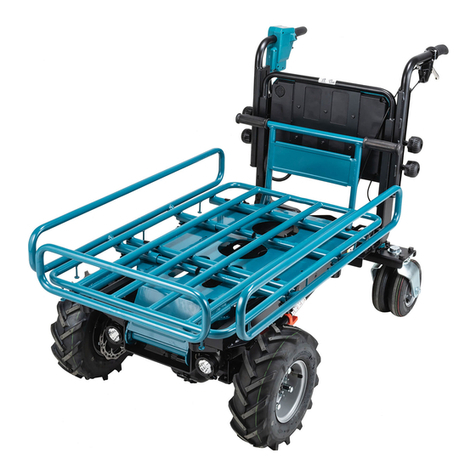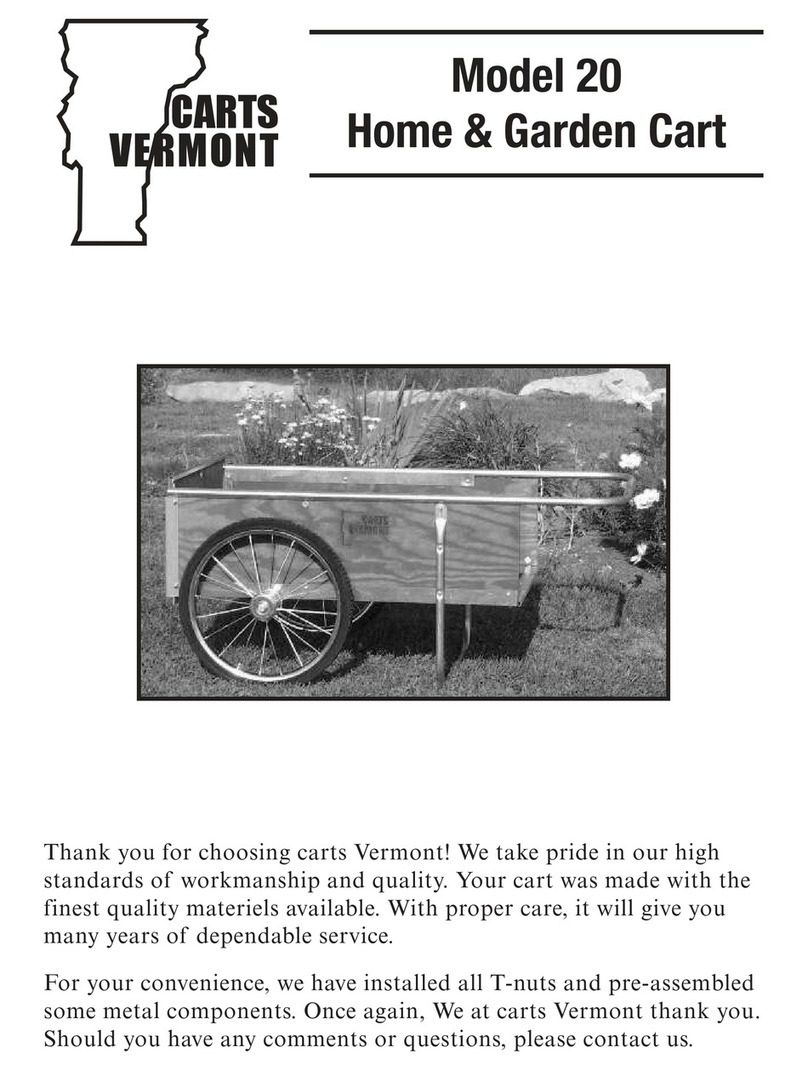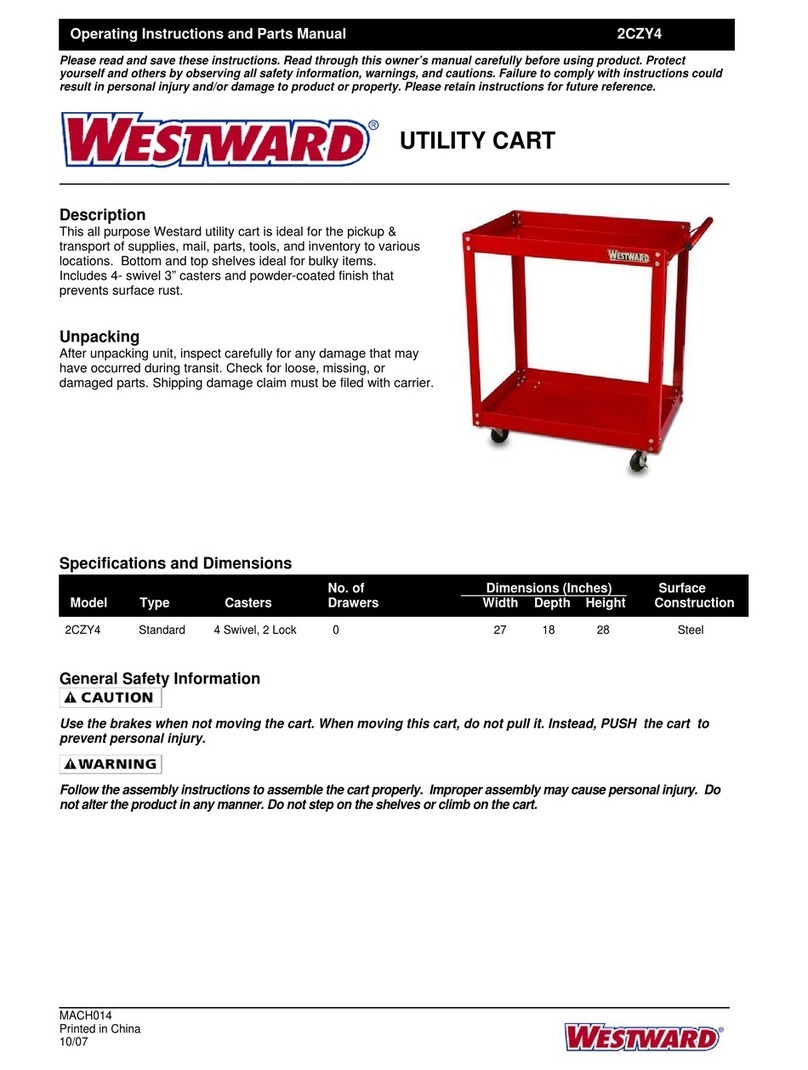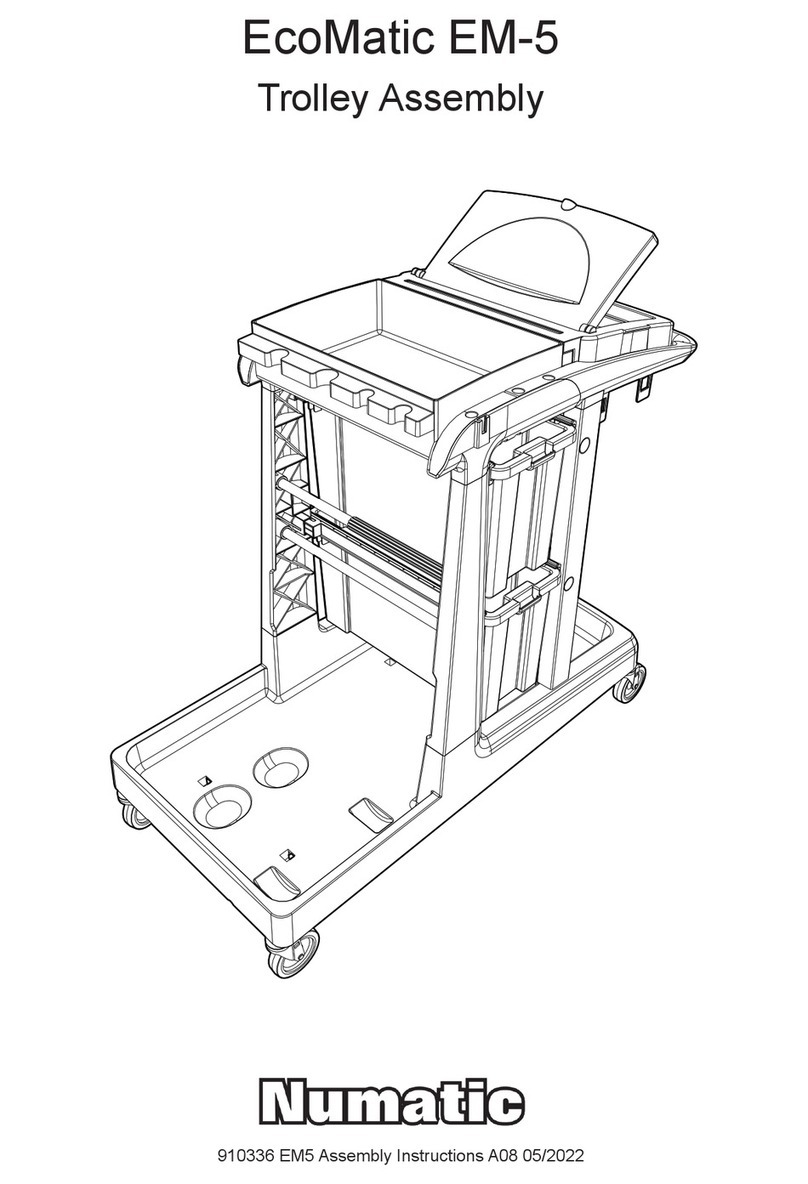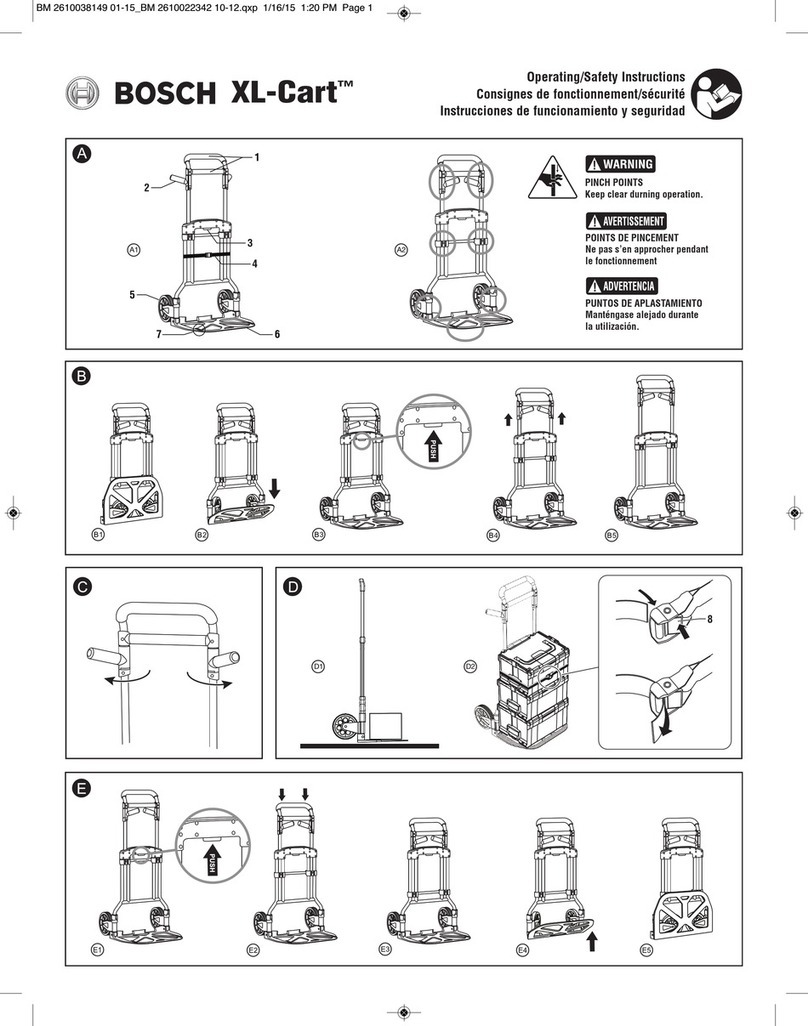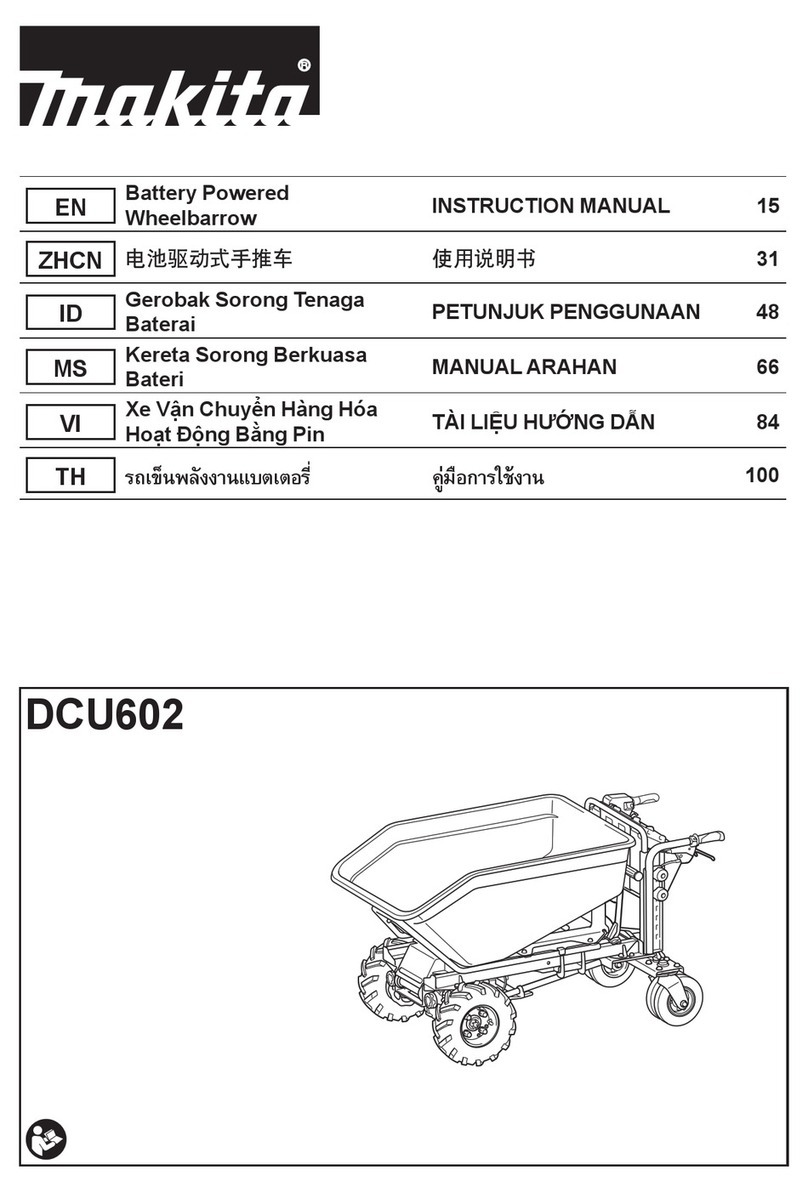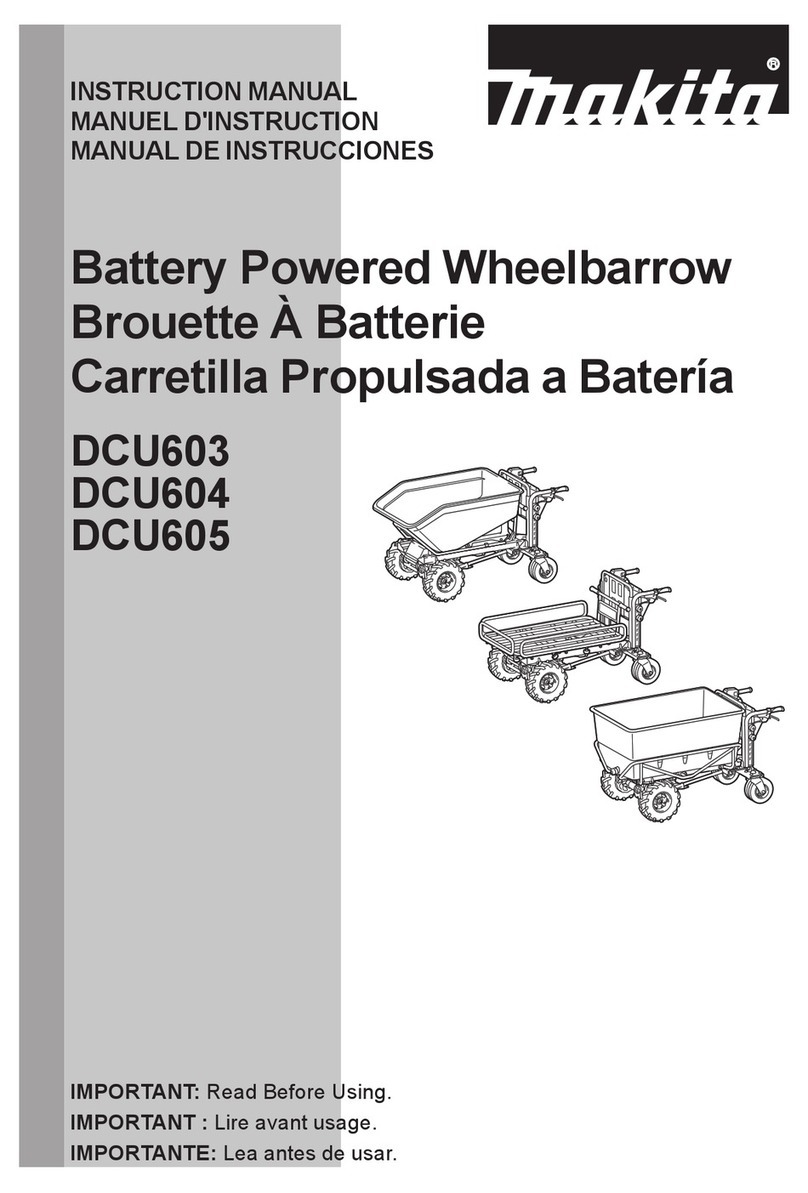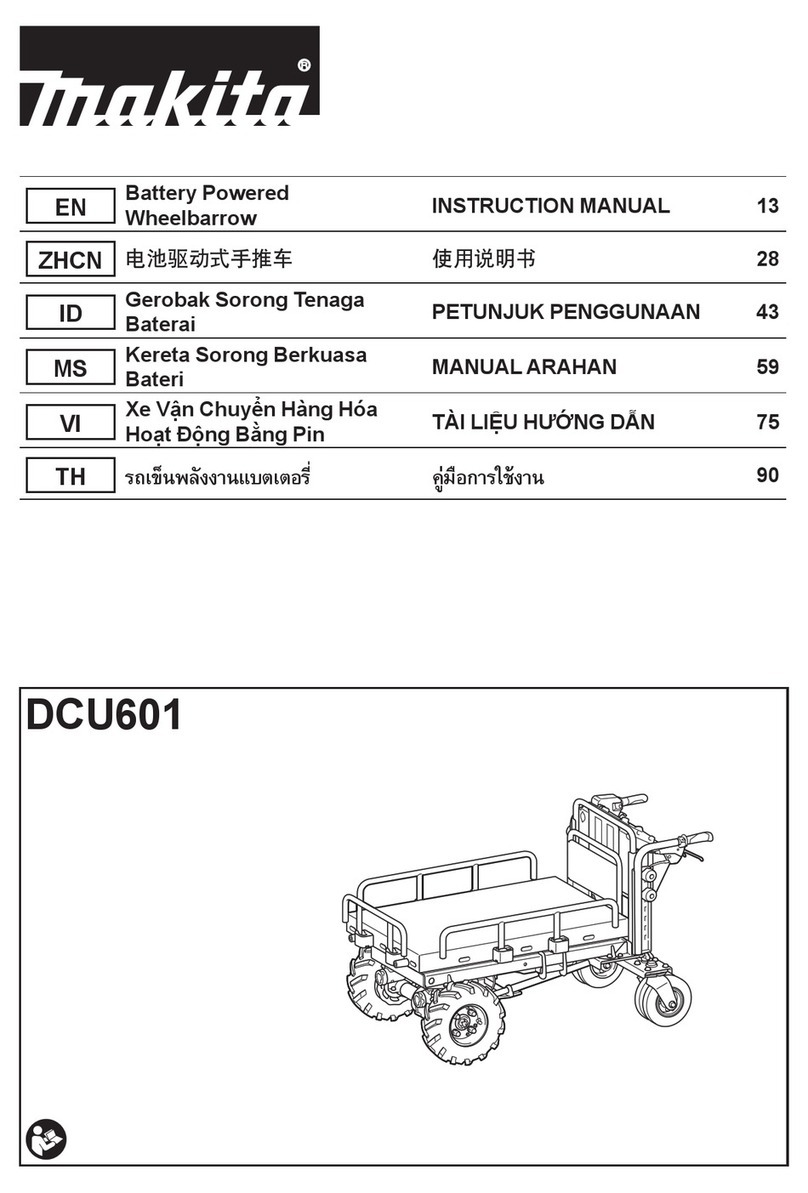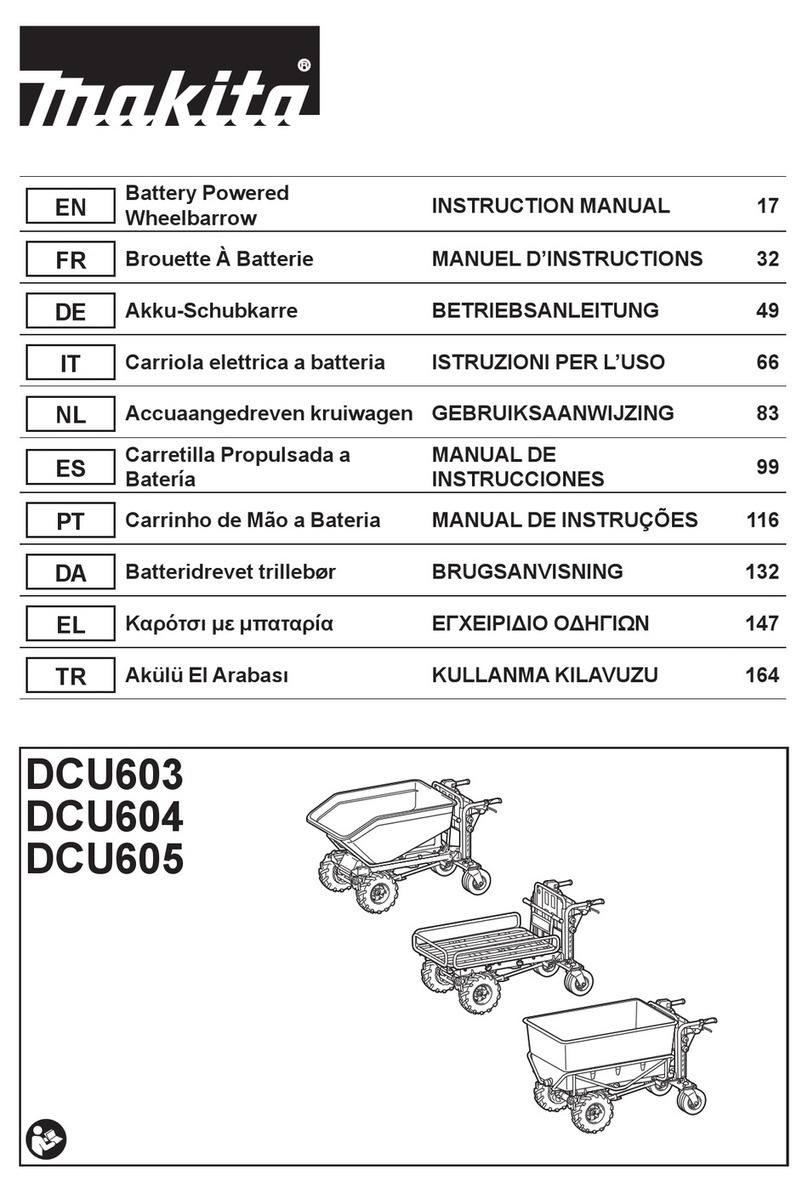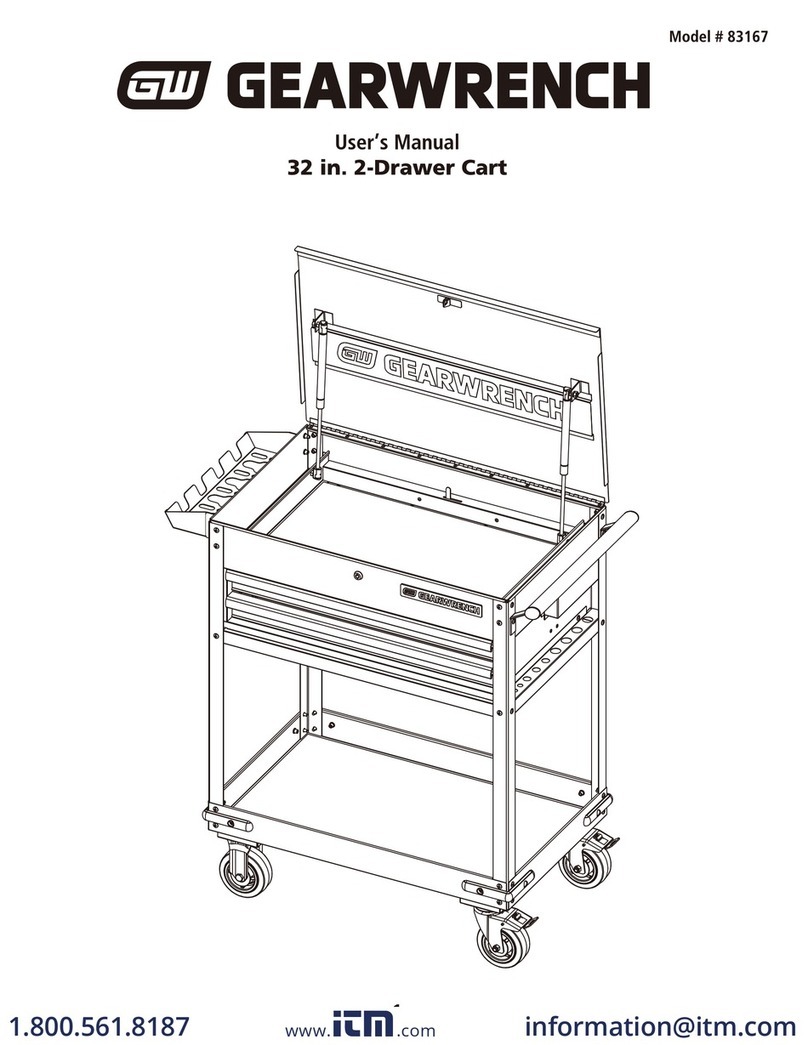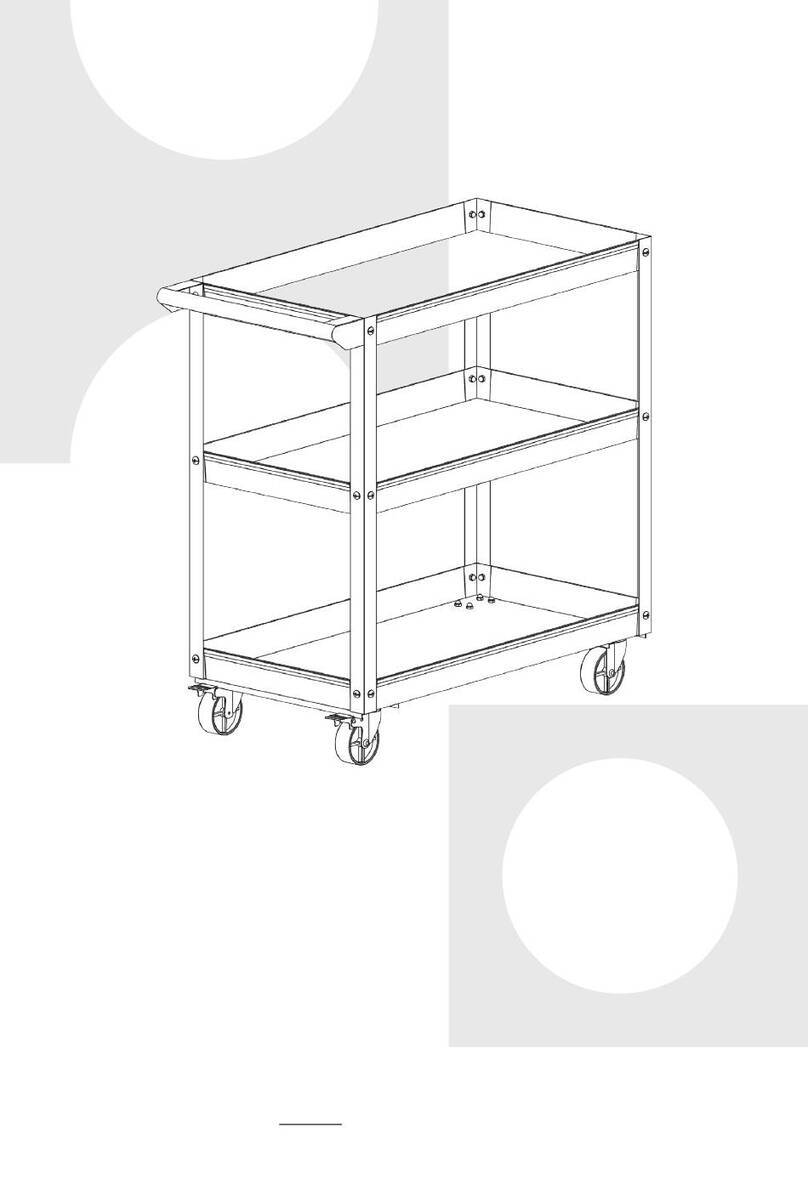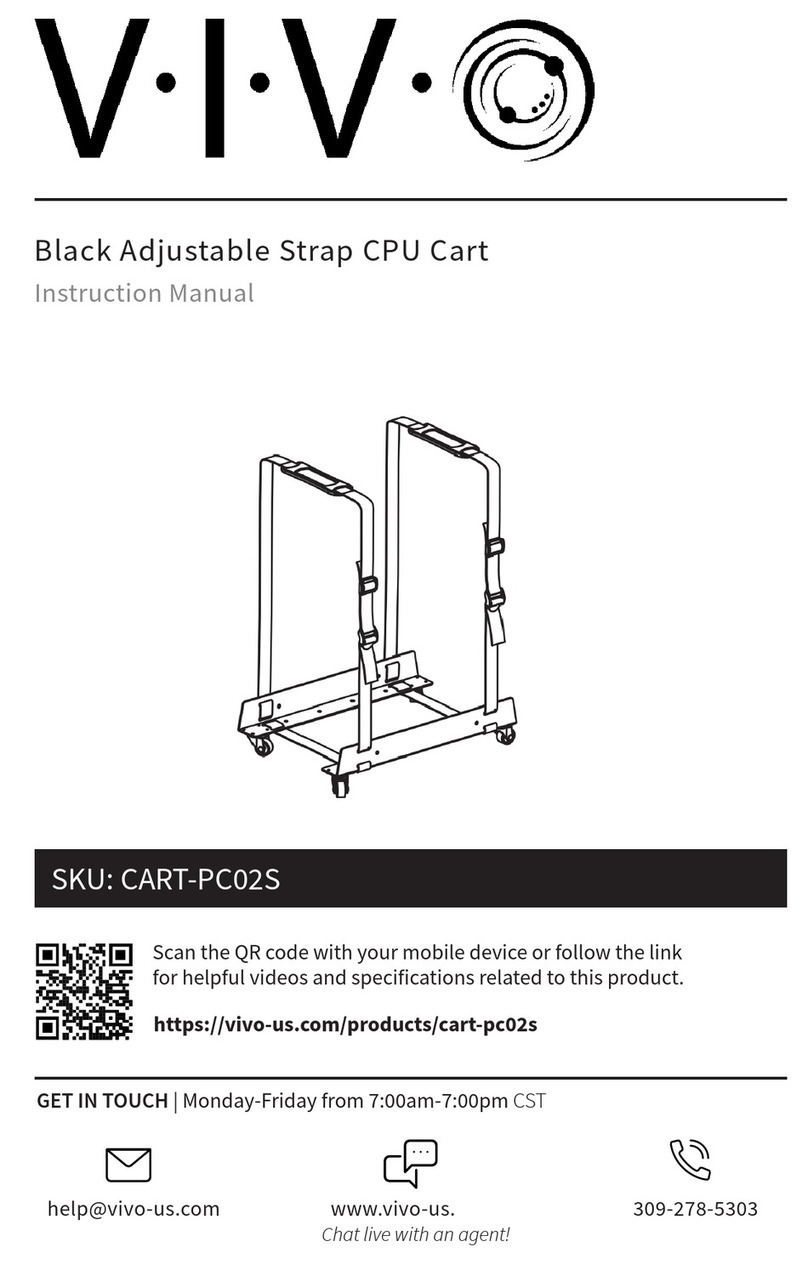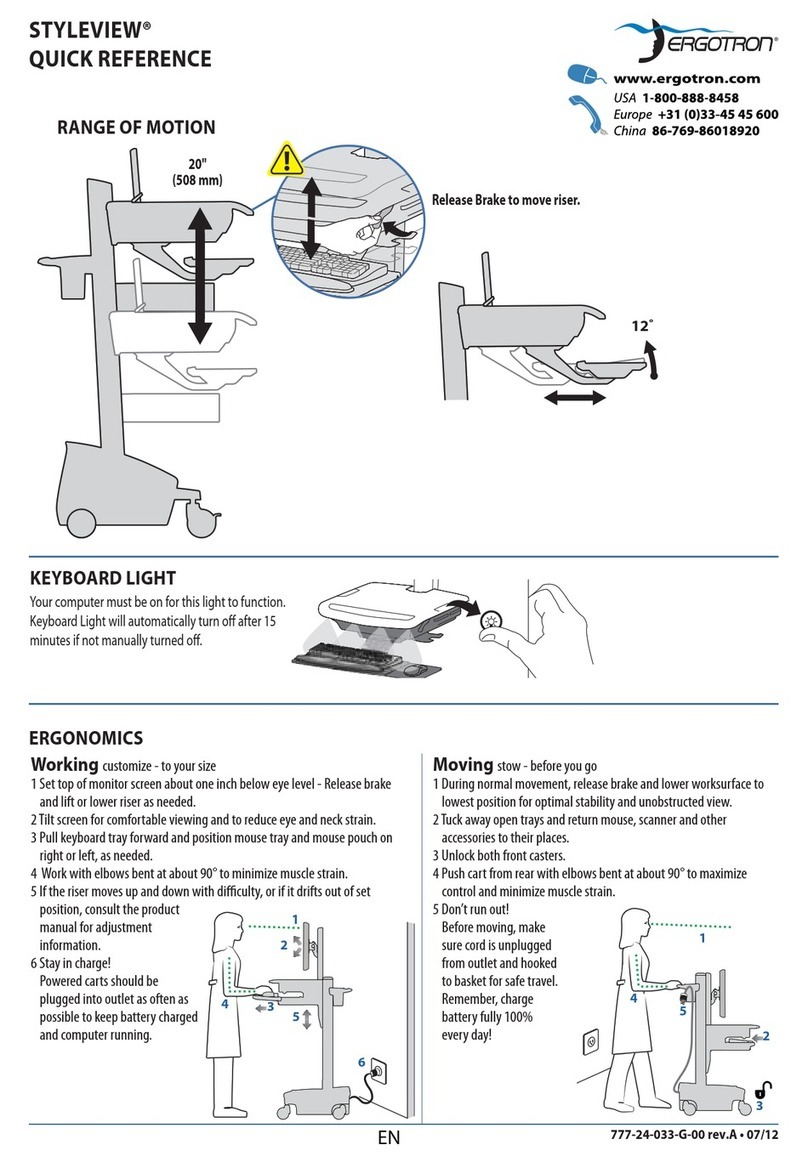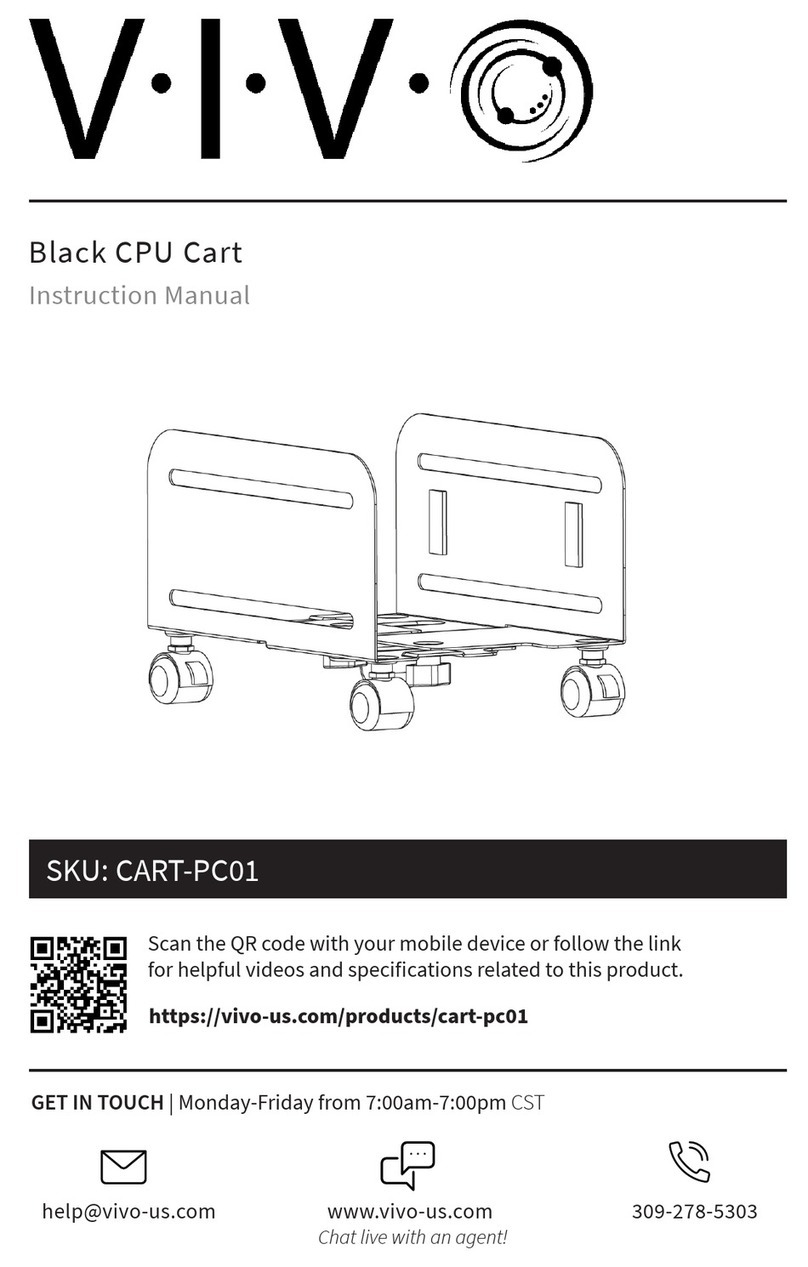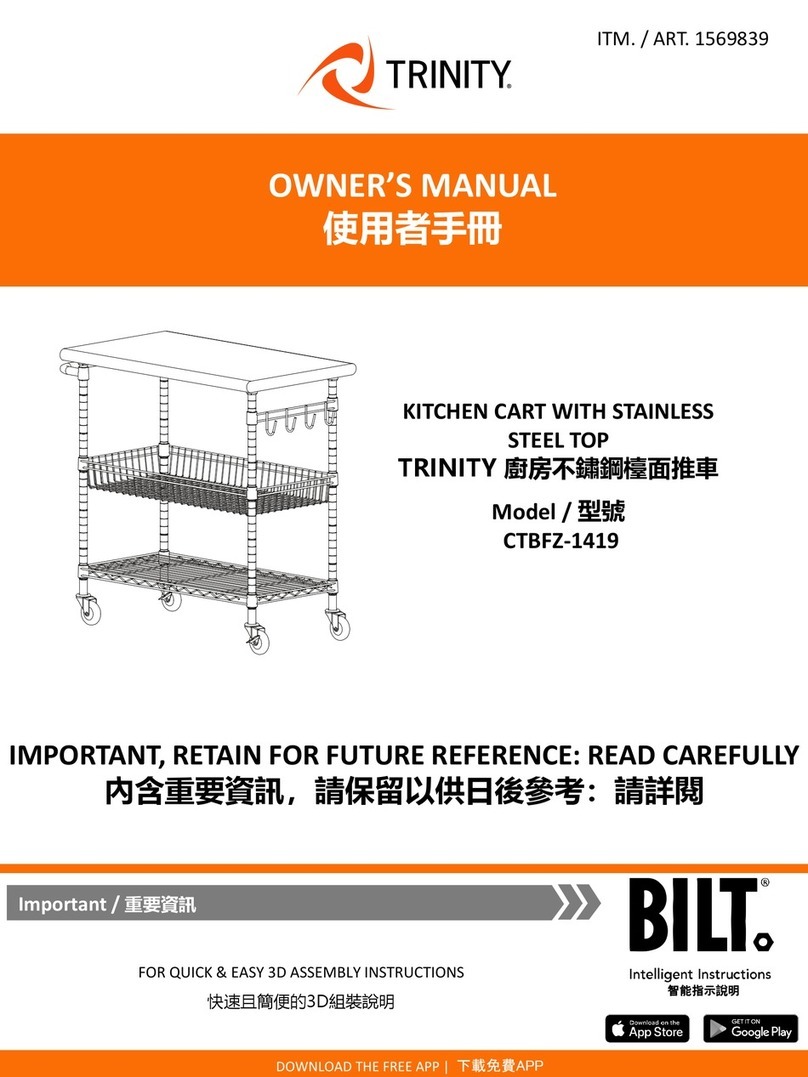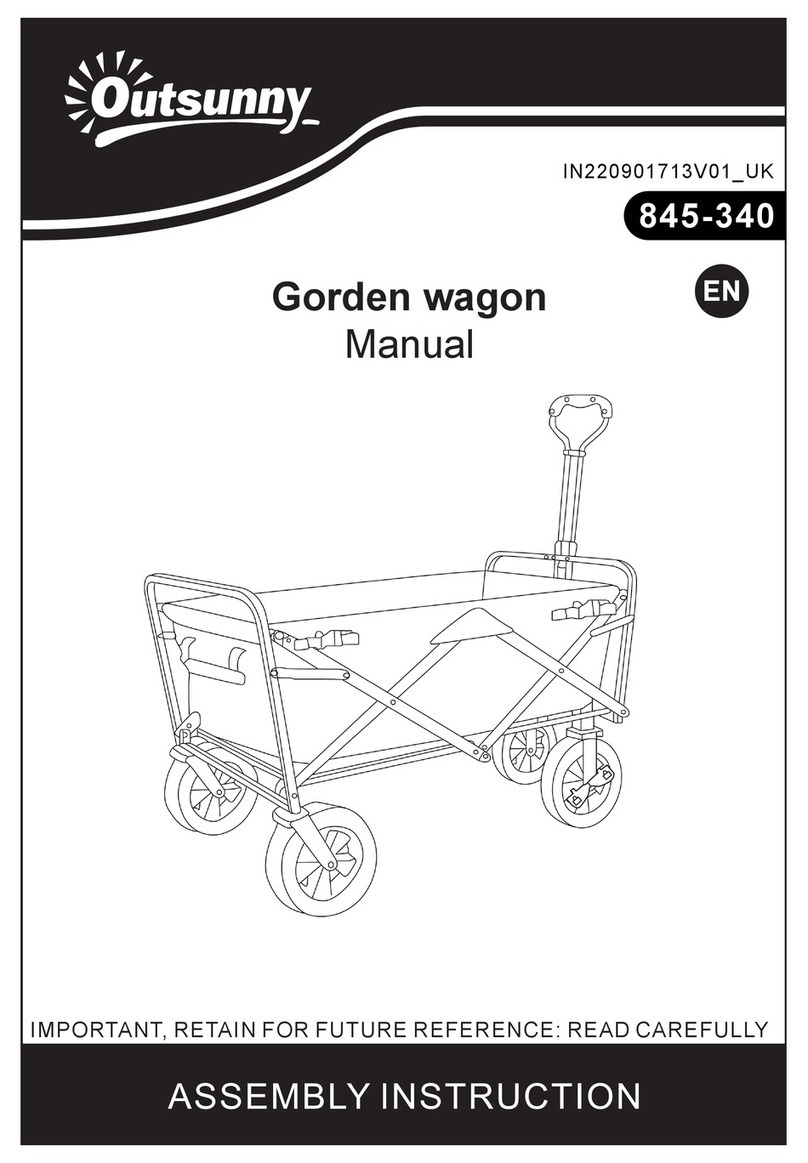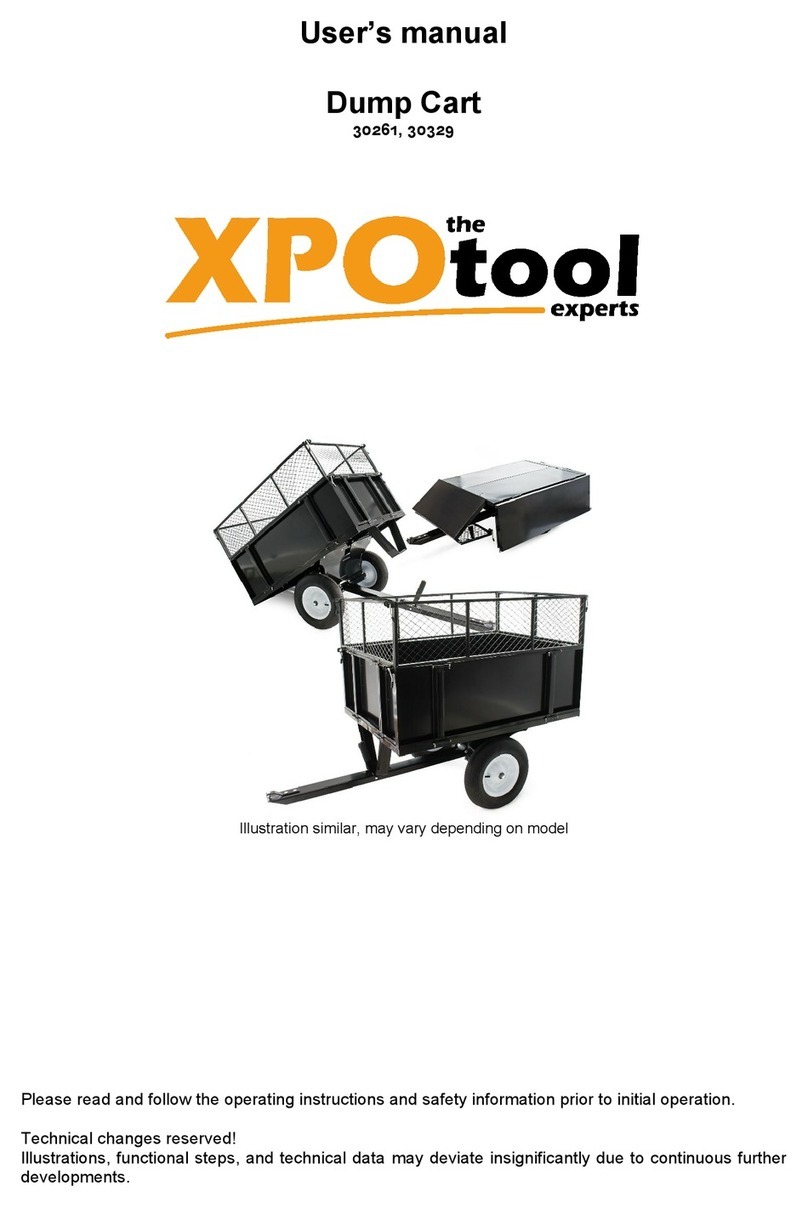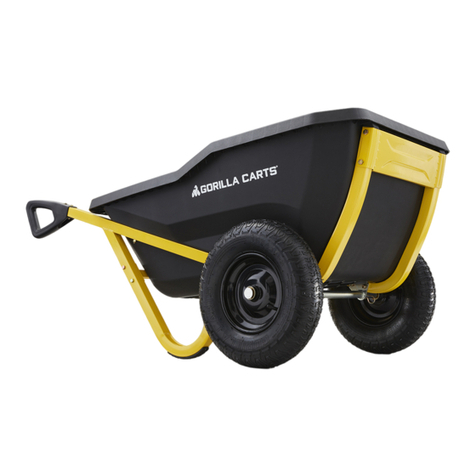
7ENGLISH
20. Do not leave the machine unattended while
objects are loaded on the carrier.
21. Do not lift or lower the carrier in windy condi-
tions. Doing so may make the machine unstable,
and it may cause an accident.
22. Do not lift or lower the carrier in locations
where the ceiling is low or where there is an
obstruction in the upward direction of the
machine. Doing so may cause an accident.
Operation on slopes
1. Do not cross on slopes.
2. Stop before the downhill, and be sure to
decrease speed and exercise caution.
3. If the speed is too fast when traveling downhill,
the beep sound is emitted. In this case, slow
down using the brake.
4. Exercise caution when starting or stopping the
machine on slopes.
5. As the loads become less stable on slopes,
rmly secure the loads with ropes.
6. As the machine becomes unstable depending
on the condition of the road, keep the load to a
minimum.
7. As the view is obscured on slopes, keep the
height of the load to a minimum.
8. Never stop the machine on slopes. Stop the
machine on at ground, and lock the brake
lever, and then turn the power o.
9. Do not change the direction or speed mode on
steep slopes.
10. Do not release the switch trigger on upward
slopes. The machine may go in reverse and
cause an accident.
11.
Make sure that the remaining battery capacity
is enough before operating on slopes. If the
remaining battery capacity is not enough, charge
the battery or replace it with a charged one.
12. When starting the machine on slopes, do not
place your foot behind the rear wheel since the
machine moves back a few centimeters.
Loading objects
1. Do not overload objects. When loading
objects, be sure to follow the instructions and
load limits in the manual.
2. Since the larger the load, the more dicult it
is to operate the machine, keep the load within
the range that does not aect the operation.
3. Firmly secure the objects with ropes.
4. Load the objects within the carrier. If the
objects protrude from the carrier, there is a risk
of accidents due to the objects falling or contact
obstacles such as walls.
5. Be sure that loaded objects are below eye
level. If the load is too high, it is dangerous
because the view is obscured. Also, there is a risk
of overturning and injury because the load is likely
to be unbalanced.
6. Load the objects on the carrier evenly. If the
objects are loaded unevenly, there is a risk of
overturning and injury because the load is likely to
be unbalanced.
7. Be sure to load heavy objects rst to keep
balance.
8. Load and unload objects on at ground. Never
load or unload objects on slope.
Transportation of machine
1. Use the ladder rails that are at least 4 times
as long as the height of the truck bed, with
xtures suitable for the bed, with a non-slip
surface and sucient width, and capable of
withstanding the weight of the machine and
operator. Read the instruction manual of the
ladder rails carefully before use.
2. Before loading the machine, unload all objects
from the machine and remove mud and other
debris from the tires. Install the ladder rails on
a at and stable surface.
3. Before loading or unloading the machine,
make sure that there are no people around the
machine and the ladder rails. Load or unload
the machine at low speed, taking care to pre-
vent the machine from falling o the ladder
rails, and not to hit your head on the ceiling of
the truck. Use extreme caution when loading
or unloading the machine backward.
4. When transporting the machine, lock the brake
lever, turn the power o, remove the batteries
and lock key, and x the machine securely.
Maintenance and storage
1. Before storage or attempting to perform
inspections or maintenance, always be sure
to stop the machine on at ground and lock
the brake lever, and turn o the machine, and
remove the lock key and battery cartridges.
2. Do not leave the machine unattended outdoors
in the rain.
3. When storing the machine, avoid direct sun-
light and rain, and store it in a place where it
does not get hot or humid.
4. This machine is equipped with a hydraulic unit
on the underside of the carrier to automati-
cally lift or lower the carrier. Do not modify the
hydraulic unit, or do not loosen the mounting
bolts of the unit or the adjustment screws of
the relief valve. It is very dangerous as it may
cause accidents or malfunctions.
Battery tool use and care
1. Recharge only with the charger specied by
the manufacturer. A charger that is suitable for
one type of battery pack may create a risk of re
when used with another battery pack.
2. Use power tools only with specically desig-
nated battery packs. Use of any other battery
packs may create a risk of injury and re.
3. When battery pack is not in use, keep it away
from other metal objects, like paper clips,
coins, keys, nails, screws or other small metal
objects, that can make a connection from one
terminal to another. Shorting the battery termi-
nals together may cause burns or a re.
4. Under abusive conditions, liquid may be
ejected from the battery; avoid contact. If con-
tact accidentally occurs, ush with water. If
liquid contacts eyes, additionally seek medical
help. Liquid ejected from the battery may cause
irritation or burns.



